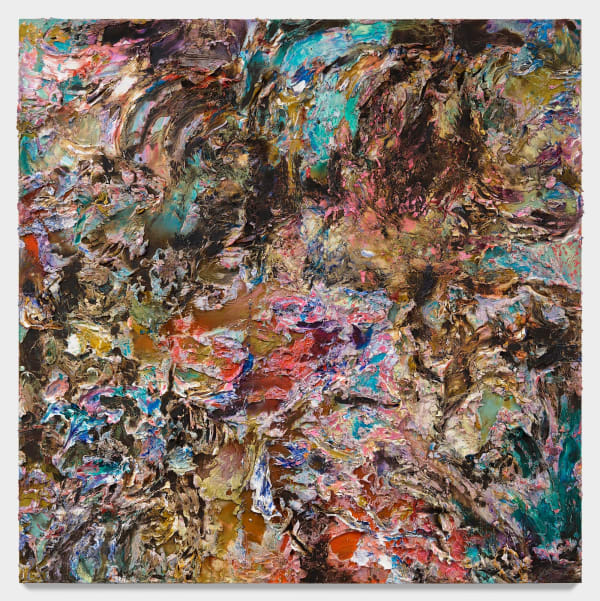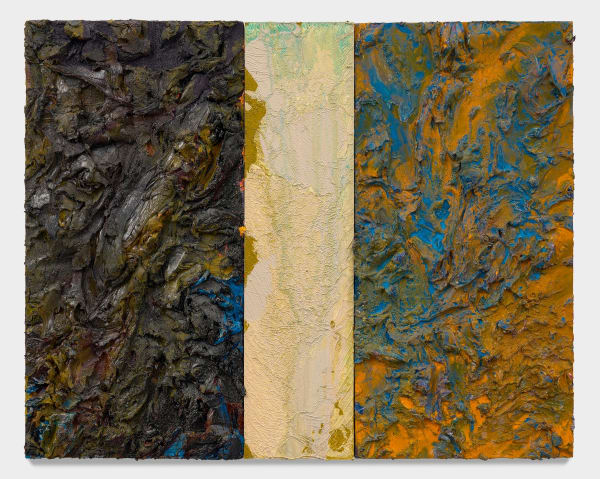Gabriel Mills: Udaya
François Ghebaly is proud to present Udaya, New Haven-based artist Gabriel Mills’s first exhibition with the gallery at the downtown Los Angeles space.
Gabriel Mills is a painter whose oeuvre, though varied, holds close to the artist’s meditated thoughts on time, love, and place. Classically trained, he steers his art-making on the one hand along a series of disciplined formal considerations: tension and harmony, counterpoint, the sublime, aspects of composition or unity that derive squarely from academic traditions. On the other, he’s interested in the ways that painting can act as a kind of ‘window’ or transformative space for the artist himself. For Mills, painting demands of him an important meditative faculty, with personal excavations around each and every turn.
In his newest exhibition, Udaya, Mills looks to test the physical and expressive limits of his chosen medium, oil paint, in the process reflecting on faith and introspection. Across ten paintings and a breadth of formal and technical approaches, he explores ideas of density and sedimentation, the cumulative effect of small things that build–whether figuratively, psychologically, or literally–into monolithic forms. Paint applied to surface, the rudimentary building block in this process, becomes a pivotal symbol in the work and in Mills’s practice at large, quite literally concretizing the artist’s hand and journey along the forward march of time. “I think it's very important in art that the artist is allowed the room to dive deep into himself,” he holds. “By doing that work the artist becomes extremely vulnerable to a point that others can find themselves in that same moment, in that same ambiguity that he’s located in himself and on the canvas.”
The exhibition title Udaya draws from the Sanskrit root for ‘dawn’ or ‘rising’ and gestures toward hard-learned principles of devotion, tribulation, and actualization that underpin the work. In paintings like the colossal Gethsemane, whose title references the Garden of Agony in the Christian Bible, Mills’s painstakingly-built polychrome impasto adds up in rippling masses to confront a sense of monumentality teetering on the geologic or celestial. Gethsemane is located at the foot of the Mount of Olives outside Jerusalem, and is the site of Christ’s retreat into prayer before his arrest and crucifixion. In the vein of this and other weighty references to deep spiritual contemplation, Mills’s artistic approach is one unafraid of matters of great scope, difficulty, or consequence–“I’ve been thinking a lot about phenomena that are cloud-like, or atmospheric, that can be at the same time vast and immense, weightless, and unwieldy. I think that in my work in general, I’m interested in forms and ideas that hold opposites close together. So much of life is that way.”
Scattered throughout Udaya are examples of Mills’s signature triptych form, which considers religious and art historical ideas of trinity, as well as the unique formal opportunities created by arranging and contrasting separate, sometimes conflicting components in a single compositional unit. In the triptych works Aunen (2024) and Aisatsana (2024), densely impastoed passages directly border and compress other segments of spacious, vaporous color. Many of Mills’s artwork titles directly mimic this approach, where letter pairings are invented and recombined by the artist in a type of free-association that transposes his same painterly, devotional sense into sound and air. In each case, the effect is one of elongation, encouraging prolonged interaction to take stock of each work’s constituent or opposing elements–time, space, color, mark–and the many truths therein.
Gabriel Mills (b. 1992, New Rochelle, NY) received his BFA from the University of Hartford, and an MFA in Painting and Printmaking from the Yale School of Art. Solo exhibitions include the Nerman Museum of Contemporary Art, Overland Park, Kansas (forthcoming); François Ghebaly, Los Angeles, California; Micki Meng, San Francisco, California; and the Museum of Arts and Culture, New Rochelle, New York. His work has been included in group presentations at the Museum of African Diaspora, San Francisco, California; Museu Inimá De Paula, Minas Gerais, Brazil; the Green Family Art Foundation, Dallas, Texas; and the Metropolitan Museum of Art, New York, New York.










